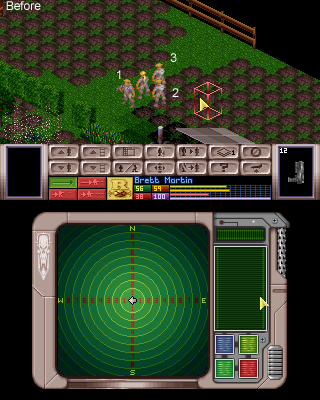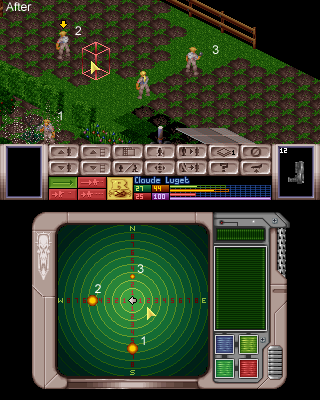Difference between revisions of "Talk:Motion Scanner"
m |
|||
| Line 27: | Line 27: | ||
There might be cases where if you see a single "big dot" inside a UFO, it might be safe to enter since the alien will have used up most its TUs. I'm not confident this is a reliable indicator, however. I sometimes watch a dot from turn to turn to see which way it moves, which at least gives you some warning that an alien's probably on its way out. | There might be cases where if you see a single "big dot" inside a UFO, it might be safe to enter since the alien will have used up most its TUs. I'm not confident this is a reliable indicator, however. I sometimes watch a dot from turn to turn to see which way it moves, which at least gives you some warning that an alien's probably on its way out. | ||
| − | The biggest problem with scanners is the false | + | The biggest problem with scanners is the false negatives: if you scan no movement, that either means there's no alien, or that there's one that's got all its TUs (''very'' dangerous). You can't assume that the absence of a dot is the absence of an alien.--[[User:Ethereal Cereal|Ethereal Cereal]] 02:16, 16 March 2007 (PDT) |
Revision as of 09:18, 16 March 2007
Someone should make a tutorial on how to use those darn things.
I never manage to get a grasp on how to use it effectively. I often found it easier to turn my soldiers around in circles to clear my immediate vincinity. Maybe a image of the motion detector screen, and another to show the positions of the aliens and how it relates to one another?
--Vagabond 23:16, 15 March 2007 (PDT)
- It's not terribly difficult to use. All it does is pick up movement. Nothing else. The main use is to check for movement of units in an enclosed area - i.e. the UFO or a building or even the outside of the Skyranger before you embark after waiting the first or more turn.
- The orientation is simple. It's the same as the overhead map. Top is North, then clockwise it's East, South and West. The numbers on the rings on the screen represent every tile away from you. It goes up to 8 or 9 rings, so that's a 9 tile radius. Which is coincidentally your visual range at night, so there's absolutely no point in using a motion scanner out in the open.
- Using soldiers as an example, when no movement has occured, you'll get nothing on the screen.
- After movement, units that have moved will register on the display. Note that the more they have to walk, the larger their blip on the screen.
- That's it really. It's useful if you've got a wall and cannot see what's behind it. Out in the open, it's utterly useless.
- - NKF
Off the top of my head, I can describe one case where it's useful: if I'm using Proximity Grenades outside a UFO and there's a pile of stuff I don't want to blow up, I'll have a soldier beside the UFO use a scanner to see if an alien's in the antechamber, ready to exit. If not, I can risk grabbing extra stuff without having to get back into "safe" position.
There might be cases where if you see a single "big dot" inside a UFO, it might be safe to enter since the alien will have used up most its TUs. I'm not confident this is a reliable indicator, however. I sometimes watch a dot from turn to turn to see which way it moves, which at least gives you some warning that an alien's probably on its way out.
The biggest problem with scanners is the false negatives: if you scan no movement, that either means there's no alien, or that there's one that's got all its TUs (very dangerous). You can't assume that the absence of a dot is the absence of an alien.--Ethereal Cereal 02:16, 16 March 2007 (PDT)

